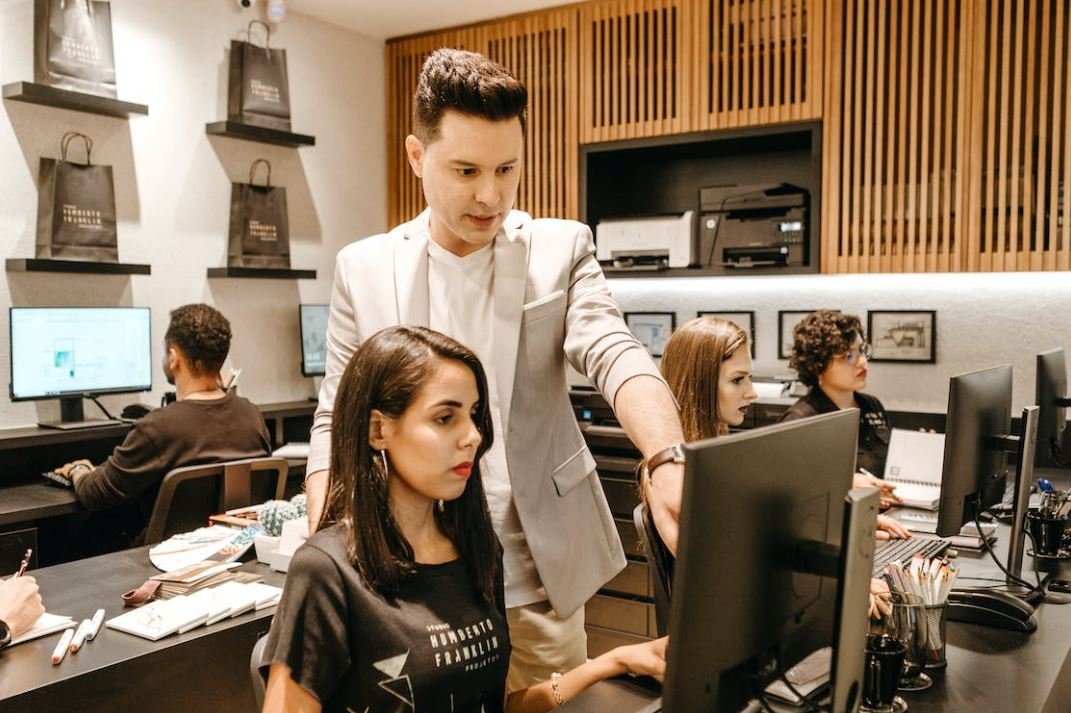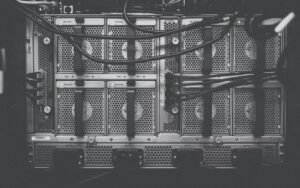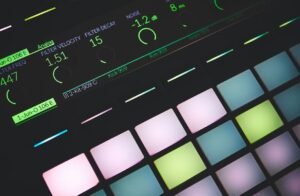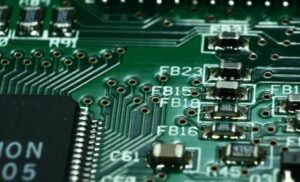AI vs Artist
Artificial Intelligence (AI) technology has been rapidly advancing and has started to impact various industries, including the world of art. As AI becomes more capable of creating complex and aesthetically pleasing works of art, it raises questions about the future of traditional artistic practices and the role of human artists. This article explores the comparison between AI and human artists, their strengths and weaknesses, and the potential implications for the art world.
Key Takeaways
- AI is capable of creating impressive works of art, but lacks the emotional depth and subjective interpretation that human artists bring.
- Human artists have a unique ability to infuse their artwork with personal experiences and emotions, resulting in a more authentic and meaningful connection with the audience.
- The collaboration between AI and human artists has the potential to push the boundaries of creativity and innovation in the art world.
**Artificial Intelligence** has made significant strides in the field of art, producing paintings, sculptures, and even music that closely resemble those made by human artists. *However, the process and motivation behind creating art differ greatly between AI and human artists.* While AI relies on algorithms and data analysis to mimic existing styles and create new artworks, human artists draw inspiration from their personal experiences, emotions, and imagination to express their unique perspectives.
Although AI-generated art can be visually impressive, there is a certain intangible quality that only human artists can bring to their work. *The human touch, emotions, and the ability to convey a personal narrative are what make art truly captivating and relatable.* The imperfections and the artist’s hand can reveal a rawness and authenticity that is often lacking in AI-generated art.
The Strengths of AI in Art
- Efficiency: AI can create art at a faster rate than human artists.
- Consistency: AI can maintain a consistent style in its artworks.
- Exploring New Styles: AI can replicate existing styles, as well as generate entirely new and innovative ones.
Despite the limitations, AI has several strengths when it comes to art creation. *One of its notable advantages is the efficiency in producing artworks.* AI algorithms can create multiple pieces of art in a short amount of time, constantly iterating and refining based on feedback. This speed of creation allows for an exploration of a wide range of ideas and possibilities.
Furthermore, AI can maintain a *consistent style* throughout its artworks. Once a style has been learned or programmed into the system, AI can produce works that adhere closely to that specific style, offering a cohesive body of work that is instantly recognizable.
The Strengths of Human Artists in Art
- Emotional Connection: Human artists can evoke deep and personal emotions through their work.
- Uniqueness: Human artists infuse their art with their individual experiences and perspectives.
- Subjectivity: Human artists provide a subjective interpretation of the world through their creations.
On the other hand, human artists possess certain strengths that AI cannot replicate. *The emotional connection* that human artists can establish with their audience is one of the most powerful aspects of their work. The ability to evoke a wide range of emotions, ranging from happiness to sadness, helps forge a deep and personal connection between the artwork and the viewer.
*Each human artist possesses a unique perspective and experiences,* which they infuse into their work. This uniqueness sets their creations apart and allows viewers to gain insights into different cultures, societies, and individual viewpoints. The artist’s background, values, and lived experiences shape their art, making it a reflection of who they are as individuals.
The Future of AI and Art
AI and human artists are not mutually exclusive entities. *In fact, the collaboration between AI and human creativity has the potential to revolutionize the art world.* By combining the strengths of both, new possibilities and artistic expressions emerge.
| AI | Human Artists |
|---|---|
| Efficiency in creation | Emotional connection |
| Consistent style | Unique perspectives |
| Exploration of new styles | Subjective interpretation |
The integration of AI and human creativity allows for the *exploration of uncharted territories* in art. By leveraging the speed and consistency of AI, artists can experiment with new techniques and styles, pushing the boundaries of traditional art forms.
At the same time, the emotional depth and subjective interpretation provided by human artists can infuse AI-generated art with *a sense of humanity and complexity.* The blending of AI and human artistic abilities can result in unparalleled works that captivate and challenge audiences in new and exciting ways.
The Impact of AI on the Art World
The rise of AI in the art world raises questions about the role of human artists and the future of traditional artistic practices. However, *the goal should not be to determine which is superior,* but rather to embrace the collaboration between AI and human artists as a catalyst for innovation and creativity.
| AI | Human Artists |
|---|---|
| Algorithms and data analysis | Personal experiences and emotions |
| Efficiency in creation | Authentic and meaningful connection |
| Replication and generation of styles | Rawness and imperfections |
*Ultimately, the integration of AI in art should be seen as an opportunity to push the boundaries* of creative expression and expand the possibilities of what art can be. The coexistence of AI and human artists opens up avenues for collaboration, innovation, and the creation of art that transcends traditional categorizations.

Common Misconceptions
Misconception 1: AI can replace artists completely
One common misconception is that AI has the ability to completely replace human artists. While AI can produce artwork, it lacks the unique creativity, emotion, and interpretation that human artists bring. AI algorithms currently lack the ability to understand complex human emotions and societal contexts, which limits their ability to create truly original and meaningful art.
- AI can only mimic existing styles or patterns, limited to the data it was trained on.
- Human artists possess insights and perspectives that cannot be replicated by AI systems.
- The craftsmanship and craftsmanship involved in the artistic process cannot be replaced by AI.
Misconception 2: AI-generated art lacks originality
Another misconception is that AI-generated art is mere replication of existing art styles, devoid of originality. While AI can be trained on existing artworks and produce pieces that imitate those styles, it is also capable of generating new and unique artistic expressions. AI algorithms can combine different styles, experiment with novel forms, and generate innovative designs that human artists might not have envisioned.
- AI can create novel art by combining elements from various art styles.
- AI algorithms have the potential to discover new artistic techniques or expressions.
- AI-generated art can push the boundaries of traditional art forms and open new creative possibilities.
Misconception 3: AI eliminates the need for human creativity
Some people believe that AI’s ability to create art diminishes the importance of human creativity. However, human creativity is still invaluable in the artistic process. While AI can assist and inspire artists, it cannot replace the unique perspectives, emotions, and experiences that human artists bring to their craft. Human intervention and creativity are essential in defining the concept, intent, and deeper meanings behind artworks.
- Human artists have the capacity to imbue art with personal emotions and experiences.
- AI lacks the contextual understanding and social consciousness necessary for creating impactful artwork.
- Human creativity in conceptualizing ideas and storytelling cannot be replicated by AI.

AI’s Ability to Generate Art
In recent years, artificial intelligence (AI) has made significant advancements in the field of art. As AI technology continues to improve, it has gained the ability to create stunning and lifelike artwork. The following table showcases some of the impressive pieces generated by AI artists:
| Artwork | Artist | Date Created |
|---|---|---|
| The Portrait of Edmond de Belamy | Obvious | 2018 |
| Flowing Rhythms | AIVA (Artificial Intelligence Virtual Artist) | 2020 |
| The Next Rembrandt | Microsoft Research | 2016 |
AI Art Sold at Auctions
Art generated by AI has not only gained recognition but also monetary value. The art market has witnessed AI-generated pieces being sold at auctions for significant amounts of money. The table below presents some of the noteworthy transactions:
| Artwork | Artist | Price Sold |
|---|---|---|
| Portrait of Edmond de Belamy | Obvious | $432,500 |
| A Form Of | GAN (Generative Adversarial Networks) | $432,500 |
| Memories of Passersby I | AI Gahaku | $51,500 |
AI Art vs. Traditional Art
As AI art gains traction, it raises questions about its comparison to traditional art created by human artists. The table below highlights some key distinguishing aspects between AI-generated art and traditional art:
| Aspect | AI Art | Traditional Art |
|---|---|---|
| Creator | Computer Algorithm | Human Artist |
| Emotion | Simulated | Authentic |
| Originality | Based on Existing Data | Unique Perspective |
AI in Music Composition
AI’s creative abilities are not limited to visual arts alone. It has also made strides in the field of music composition. The table below showcases some remarkable musical compositions created by AI:
| Composition | Composer | Date Created |
|---|---|---|
| Bach in Style of Mozart | DeepBach | 2017 |
| Daddy’s Car | Jukedeck | 2016 |
| Fluid Piano Concerto | Flow Machines | 2018 |
Recognition and Awards
AI-generated art has gained recognition and received prestigious awards in various art competitions. The table below highlights some of the notable achievements:
| Award | Artwork | Artist | Year |
|---|---|---|---|
| Lumen Prize | The Origin of the World 2.0 | Björn Schülke | 2019 |
| HKNME Award | Concerto for Piano and Artificial Intelligence | Oscar Sharp | 2017 |
| AIJ Award | DeepArt | Leon Gatys | 2015 |
Limitations of AI Artists
Although AI artists have made immense progress, they still face certain limitations. The table below outlines some of the challenges faced by AI artists:
| Limitation | Description |
|---|---|
| Originality | Difficulty in creating entirely unique pieces |
| Intuition | Lack of human-like intuition in the creative process |
| Interpretation | Challenges in interpreting complex emotions and concepts |
AI Art Galleries and Exhibitions
Art galleries and exhibitions dedicated to AI-generated art have emerged, showcasing the talent of AI artists to the public. The table below lists some of the renowned AI art galleries and exhibitions:
| Name | Location | Year Established |
|---|---|---|
| AI Art Lab | London, UK | 2019 |
| Art3000 | Paris, France | 2018 |
| AI x Art | New York City, USA | 2020 |
The Future of AI and Art
Artificial intelligence continues to push the boundaries of creativity, leaving us wondering what lies ahead. The convergence of AI and art has the potential to revolutionize the creative landscape. By combining the power of algorithms and human imagination, we may witness breathtaking masterpieces that transcend our current understanding of art.
Frequently Asked Questions
What is the difference between AI and an artist?
AI, or artificial intelligence, refers to a computer system or program that is designed to perform tasks that would typically require human intelligence, such as visual perception, speech recognition, or decision making. On the other hand, an artist is a creative individual who uses their skills, imagination, and emotions to produce works of art, such as paintings, sculptures, or music. While AI can simulate certain aspects of creativity, it lacks the emotional connection and human experience that often informs an artist’s work.
Can AI create art?
Yes, AI can create art. With advancements in machine learning and deep learning algorithms, AI is becoming increasingly capable of generating original artwork. However, the creative process of AI is fundamentally different from that of a human artist. AI relies on analyzing vast amounts of existing artwork and data to generate new pieces, whereas artists often draw inspiration from their surroundings, emotions, and personal experiences.
How does AI generate art?
AI generates art by using algorithms and machine learning techniques. It can analyze patterns, styles, and features present in existing artwork and then use that information to create new pieces. This process involves training the AI on a large dataset of artwork and leveraging various computational methods, such as neural networks, to generate unique art pieces based on the learned patterns.
Can AI replicate the style of famous artists?
Yes, AI can replicate the style of famous artists to a certain extent. By analyzing the characteristics and patterns found in an artist’s work, AI algorithms can mimic their style and produce artwork that closely resembles the original artist’s creations. However, it’s important to note that AI replication is an imitation and can only approximate the style of the artist rather than fully capturing their unique interpretation and creative nuances.
Does AI threaten the role of artists?
While AI has the potential to automate certain aspects of the creative process, it does not necessarily threaten the role of artists. AI-generated art might be used for specific purposes, such as generating visuals for video games or creating abstract art for interior design. However, the artistic value and emotional depth that human artists bring to their work cannot be replicated by AI alone. Artists will continue to play a vital role in expressing complex ideas, emotions, and cultural perspectives.
Is AI art considered genuine artwork?
The categorization of AI-generated art as genuine artwork is a subject of ongoing debate. Some argue that art, regardless of its creator, should be evaluated based on its aesthetics, conceptual depth, and impact on the viewer. Others contend that genuine artwork must be a product of human creative expression and cannot be solely generated by algorithms. Ultimately, the perception and recognition of AI art as genuine artwork vary among individuals and artistic communities.
Are there ethical concerns regarding AI-generated art?
Yes, there are ethical concerns associated with AI-generated art. One concern involves issues of authorship and intellectual property rights, as AI algorithms mimic existing artistic styles and can potentially infringe on copyrights. Additionally, the question of whether AI can truly understand the cultural, social, and historical context that informs art raises ethical considerations. The impact of AI on the job market for artists is also a point of discussion, as automation could potentially displace some artistic roles.
Can AI ever match the creativity of human artists?
While AI algorithms can produce impressive and visually appealing artwork, it is unlikely that AI will ever fully match the creativity of human artists. The act of creating art involves complex cognitive processes, emotions, and subjective experiences that are integral to human creativity. AI lacks the ability to truly understand and engage with these elements, which often result in unique, innovative, and thought-provoking artistic expressions.
How can AI and artists collaborate?
The collaboration between AI and artists can result in interesting and innovative outcomes. Artists can leverage AI tools and algorithms to enhance their creative process, explore new techniques, or generate unconventional ideas. AI can serve as a creative partner, providing suggestions, inspirations, or assisting with tedious tasks. This collaboration allows artists to expand their artistic boundaries while still infusing their unique vision, emotions, and personal experiences into the final artwork.
What does the future hold for AI and artists?
The future relationship between AI and artists is still evolving. AI technologies will likely continue to advance, enabling the generation of increasingly sophisticated art pieces. However, the human touch and the depth of emotional connection that artists impart to their work will remain highly valued. As AI becomes more integrated into the artistic process, it has the potential to inspire new forms of creative expressions and challenge traditional notions of art, while artists will continue to drive innovation, push boundaries, and express the multifaceted aspects of the human experience.




